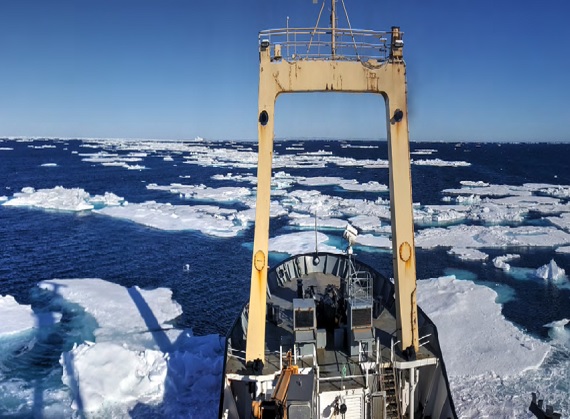Nunavik maps its seabed ahead of fiber optic cable rollout
Once completed, the communities served by the fiber optic cable will see speeds rise from three megabits per second to 50.

A seabed survey is underway along Nunavik’s Hudson Bay coast, the first step in an effort to bring fibre optic cables — and faster internet — to the region.
IT International Telecom Inc. is about midway through a marine route survey, which started in Salluit on Hudson Strait and extends south along the Hudson coast to Chisasibi.
Currently there are two ships anchored off Puvirnituq, dragging what’s called a side-scan sonar, used to map the ocean’s bottom and find the best route to lay cable.
The work went ahead this summer thanks to $125 million in federal and provincial funding that finally came through in August, almost two years after the Kativik Regional Government applied for the support.
The KRG’s Tamaani internet is leading the project, which aims to bring fiber optic to western coast of the region and boost satellite capacity to Nunavik’s Ungava Bay communities.
“The goal is to take as many people off satellite as possible,” said Daryl Combden, the director of the KRG’s administration department, to regional councillors on Sept. 10.
Rocky outcrops and glaciers are among the biggest deterrents to laying cable, but it’s high tides along the Ungava coast that make an undersea fibre optic cable too costly at this stage of the project.
While the fiber optic network was originally set to reach Puvirnituq, Tamaani anticipates there may be enough funding to expand the network north to Akulivik, Ivujivik and Salluit along the Hudson Strait.
“By 2021, once the fibre optic is deployed, the Hudson coast communities will have a capacity of over a thousand times greater than what they have now,” Combden said.
“Right now our speeds are about three megabits per second to the home. When we have fiber optic, that will go to 50.”
With those communities off of satellite, that will free up capacity for communities along the Ungava coast.
Nunavik’s largest community, Kuujjuaq, was initially set to connect by microwave tower link in Schefferville. With a new fibre optic network set to reach that community by the end of the year, Tamaani will also consider a terrestrial link to Schefferville.
The Government of Nunavut has also surveyed the area around a handful of south Baffin communities this summer — including Iqaluit — which were considered in the original feasibility study.
But the Government of Nunavut has yet to say if it plans to connect to the Tamaani fibre optic network.